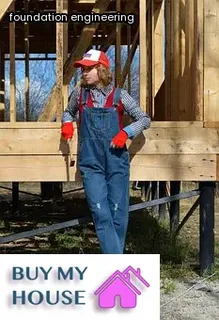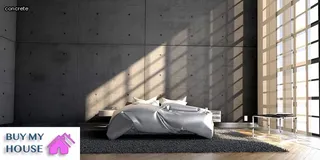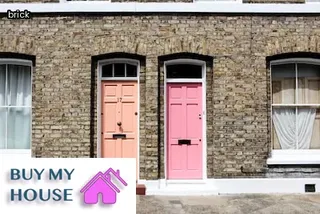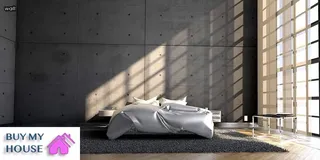Identifying corner cracks in your home's foundation is an important part of making sure it remains structurally sound. While some settling and cracking is inevitable over time, certain signs can indicate a more serious problem with the foundation.
It's important to know what these signs are so that you can take steps to repair any damage and prevent further deterioration. Some common indicators of foundation problems include cracks in the walls or floors, sloping or uneven floors, doors not shutting properly or sticking when opened or closed, windows that stick when opened or closed, gaps around window frames and door frames, bowing basement walls and cracked brickwork.
If you see any of these signs in your home, it may be time to get an inspection from a professional to assess the extent of the damage. They will be able to advise on what measures need to be taken to ensure your home's safety and stability.

When looking for potential foundation corner pops in your home, there are certain signs to look out for. These include visible cracks in the foundation walls, windows and doors that don't open or close properly, gaps around window and door frames, and any unevenness or separation between brickwork or masonry blocks.
Additionally, it is important to pay attention to any water damage on walls or floors as this could indicate a more serious issue with the foundation. When inspecting the interior of your home, keep an eye out for changes in floor levels, as well as any unusual bulging or bowing of walls or ceilings.
If you have a basement or cellar, check for persistent dampness and water seepage which may also be an indication of a damaged foundation. With proper inspection and maintenance of your home's foundational structure, you can prevent further damage from occurring and ensure the safety of your property.
Corner pops in foundation walls can be caused by a variety of issues, including soil settlement, improper installation, or inadequate support for the foundation. It is important to identify these cracks early as they can lead to more serious structural damage if not addressed.
The most common cause of corner pops is soil settlement, which happens when the soil around your home's foundation shifts and changes due to temperature fluctuations or other natural causes. This can cause even a properly installed foundation wall to crack or pop at the corners.
Improper installation of your foundation walls can also be a contributing factor in corner pops; if this is the case, it's important to have an experienced professional inspect your home and make any necessary repairs. Additionally, inadequate support for the foundation walls can cause them to shift or settle over time, leading to cracking and popping at the corners.
To prevent corner pops from occurring in your home, it's important that you ensure proper foundation installation and adequate support are present before construction begins. Regularly inspecting your home's foundation for signs of movement or cracking can also help identify potential problems before they become more serious issues.

Horizontal cracks in foundations can lead to serious structural damage if left unchecked, so it is important to be aware of the signs that your home's foundation may be cracking. Most horizontal cracks occur in the corners of a house's foundation and are typically caused by settling over time or water damage.
If you notice consistent horizontal cracks along the corners of your foundation walls, it is important to take action and address the issue as soon as possible. Additionally, watch for widening of existing cracks which could be an indication of further structural issues with your home's foundation.
If the crack appears to have widened significantly or new ones have formed, contact a professional immediately for an inspection and repair plan. Cracks can also appear due to improper grading around your home's foundation, so make sure to check for soil buildup near the exterior walls as well.
If you suspect that soil buildup is causing pressure against your walls, take steps to correct this issue by adding gravel or leveling out any uneven patches in order to reduce stress on your foundation walls and prevent further cracking.
Identifying hairline cracks in your foundation can be difficult and challenging. As these types of cracks are often very thin, they can easily be missed without proper inspection.
While some hairline cracks are just a cosmetic issue, others can indicate a more serious problem with the structure of the foundation walls. It is important to understand that not all hairline cracks in the foundation will cause structural damage, however, it is important to identify any potential problems early on before they become more serious and costly.
A professional inspector should be consulted to assess any noticeable cracks in order to determine whether or not further action is required. Knowing what signs to look out for and understanding how hairline cracks in the foundation can affect your home is essential when it comes to maintaining its structural integrity.

Sealing concrete cracks and leaks is an important step in maintaining the structural integrity of your home. If left unattended, cracks can become larger and cause weakening of the foundation.
It's important to identify where cracks may occur, such as around windows or door frames, or along the base of walls. Additionally, it's important to check for any small leaks in plumbing fixtures or pipes that could be a sign of a crack.
Once you have identified any potential signs of cracking, you can take steps to seal these areas before the problem gets worse. By sealing concrete cracks and repairing any small leaks quickly, you can help keep your home structurally sound and avoid costly repairs down the road.
When assessing and repairing bulging foundation walls, it is important to pay attention to corner cracks. These can be difficult to detect and may not be readily visible, but they should nonetheless be addressed in order to prevent further damage.
To identify corner cracks, homeowners should look for visible signs of structural shifting like gaps between the wall and floor, door jambs, or windows. In addition, water stains on the walls could indicate a problem with drainage near the foundation.
If these signs are present, an inspection from a professional should be scheduled as soon as possible to determine if there are any unseen issues with foundation corners that need addressing. Repairs may involve bracing or stabilizing the foundation walls or sealing any cracks that have occurred due to excessive moisture or deterioration of material over time.
Taking proactive steps early on can help save homeowners from more costly repairs down the road.

It is important to act quickly when large foundation cracks appear in your home as they can lead to serious structural damage. To help identify these types of cracks, look out for horizontal or vertical cracks that are wider than ¼ inch, stair-step cracks in brick or stone masonry, bowed walls and doors that don't close properly, and floors that are uneven or sloped.
Also, keep an eye on the exterior of the house for bulging walls or gaps near the foundation, which may be signs of settlement issues. If you do notice any of these signs it is important to contact a professional immediately so they can assess the cracking and provide a suitable solution.
Remember to take action as soon as possible and never ignore warnings from your foundation as neglecting them could result in costly repairs down the line.
It is important to be able to differentiate between minor and major foundation problems in order to address them accordingly. Minor issues may include small cracks in the walls or floors of your home, which are generally caused by natural settling.
These can typically be fixed with epoxy-based sealants, caulking, or even just paint. On the other hand, major foundation problems often involve corner cracks in the foundation itself, which can be caused by structural shifts due to moisture levels or ground movement.
These types of cracks can cause serious damage to your home and require professional attention from a qualified contractor. In order to determine if you have major foundation problems, look for vertical or diagonal cracks that are wider than an eighth of an inch and do not close when pressure is applied on either side.
If you find such cracks present in your home’s foundation, it is important to seek professional help right away in order to minimize further damage and make necessary repairs as soon as possible.

It's important to recognize the difference between a do-it-yourself repair job and one best left to a professional. When it comes to foundation corner cracks, a homeowner should always err on the side of caution and seek out an experienced contractor for help.
DIY repair kits may seem like an attractive option, but often times these products are not sufficient to completely resolve the problem. On the other hand, hiring a professional will ensure that all steps necessary for proper repair are taken, from cleaning and sealing the cracks with appropriate materials to finishing up with waterproofing or crack injection techniques.
Professional contractors have access to superior tools and materials that can provide lasting results. Ultimately, it is up to the homeowner to decide whether they feel comfortable tackling this kind of project themselves or if they'd rather spend a little extra money to have a qualified contractor take care of it correctly.
When assessing foundation issues, it's important to be aware of common mistakes that can prevent you from properly identifying cracks in your home's foundation. It can be easy to overlook small cracks, or mistakenly believe that vertical cracks are not a cause for concern.
Homeowners should also understand the difference between structural and nonstructural cracks, since nonstructural issues may not require repair. Additionally, the age of the house is an important factor when determining the severity of any potential issue.
Many experts recommend enlisting professional help if the foundation is more than 20 years old to ensure accurate assessment. Finally, avoid attempting repairs without proper knowledge and training; DIY solutions can often make matters worse if executed incorrectly.
Fixing a crack in a corner foundation requires careful analysis and planning. It is important to identify the cause of the crack before attempting to repair it.
Common causes can include structural settling, water damage, or soil pressure. In order to fix the crack, you must first assess the severity of the damage and determine whether it is safe to repair on your own or if professional help is needed.
If repairing yourself, you will need specific materials such as concrete patching compound, wire mesh, and caulk. The first step is to clean out any debris from the crack with a wire brush and then fill it with mortar or concrete patching material.
After patching the crack, lay down a layer of wire mesh for reinforcement, followed by a layer of caulk for waterproofing. Finally, allow time for the area to dry before painting over it with exterior paint that matches your home’s existing color scheme.
With patience and attention to detail, you can easily fix cracks in your corner foundation yourself!.

No, foundation corner cracks are not normal and must be inspected for safety. It is important to identify and address foundation corner cracks as soon as possible because they can indicate a larger structural issue with the building’s foundation.
In some cases, the crack may be minor and easily fixed. However, if the crack is large or extends from floor to ceiling, it could be a sign of a major problem that should immediately be addressed by a professional contractor.
Foundation corner cracks can occur when there is too much stress on the building’s structure, such as during an earthquake or flood. Additionally, soil movement underneath the foundation can cause cracking in the corners, which indicates that the soil has shifted unexpectedly and needs to be stabilized.
Therefore, it is important to regularly inspect your home’s foundation for any signs of cracks in order to avoid major damage down the line.
Foundation corner cracks can be an indication of a more serious problem in your home. There are several reasons why foundation corners may crack, such as too much moisture in the soil, poor construction, inadequate drainage, and soil erosion.
When soil becomes too wet it expands, pushing against the foundation walls and causing them to bow or crack. Poorly constructed foundations can lead to corner cracks due to weak mortar or inadequate reinforcement.
Inadequate drainage can also cause water to accumulate near the foundation walls, leading to cracking. Lastly, soil erosion may occur due to improper grading around the house which can also lead to foundation corner cracking.
Understanding why foundation corners crack is important for identifying potential problems with your home’s structure and taking steps to prevent further damage.
Foundation cracks can be a scary thing to spot in your home, but it's important to identify how serious they are. While some cracks pose no major risk, others can be indicative of more significant structural damage.
To know if a crack is serious, look out for the following signs: a large or growing crack, diagonal cracking, stair-like cracking, or multiple foundation cracks. If you observe any of these signs, it is best to have an expert inspect the structure right away as they could potentially weaken the foundation and lead to costly repairs.
Additionally, be sure to pay attention to where the cracks are located in relation to door and window frames as well as interior walls; if the crack lines up with these points it could indicate larger issues. Cracks in foundation corners should also be taken seriously as they can indicate foundational shifting or settling which needs to be addressed immediately.
While identifying if a foundation crack is serious may feel daunting at first, being aware of the warning signs can help you keep your home structurally sound and preserve its value over time.